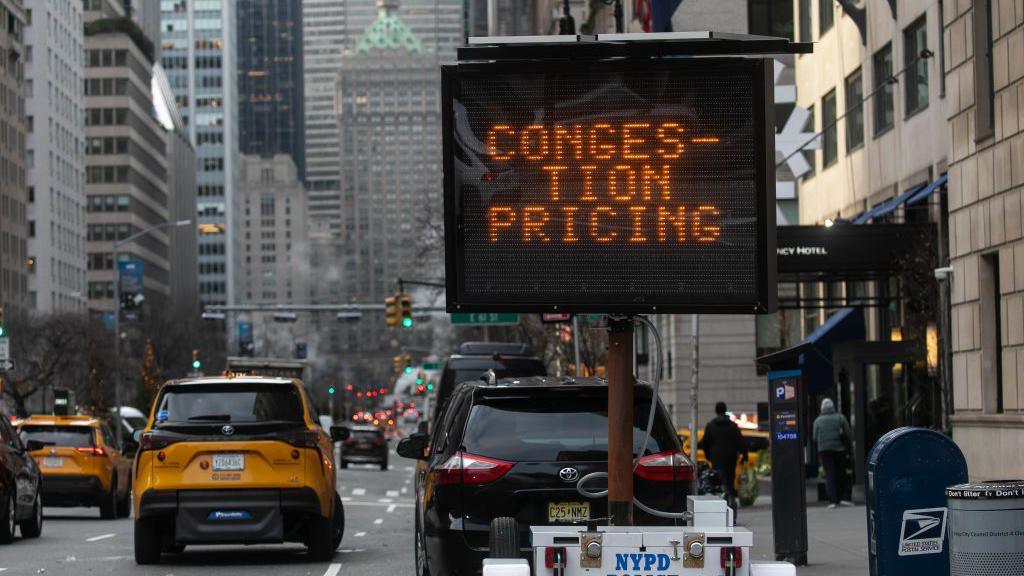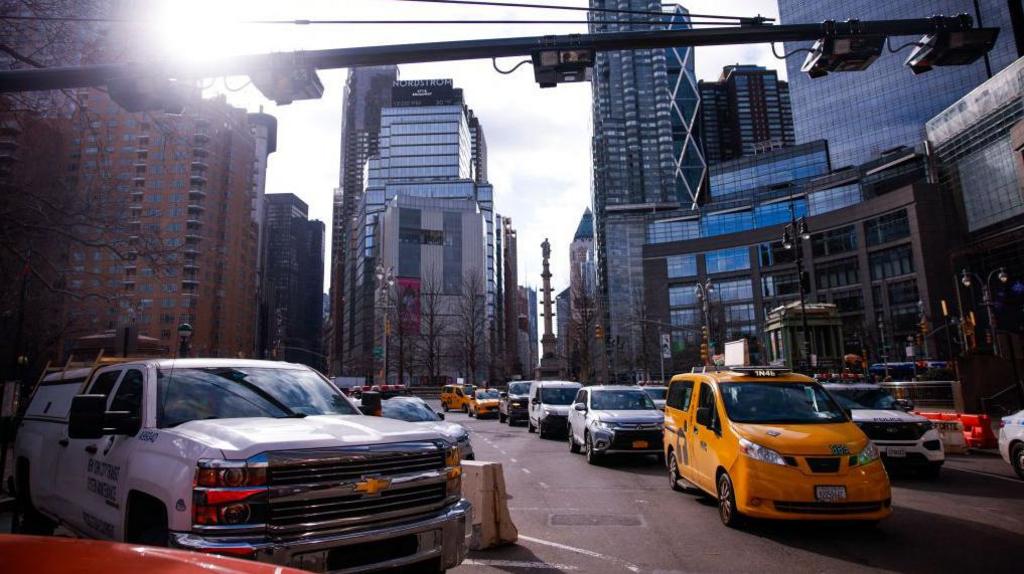New York traffic falls after $9 congestion fee

- Published
Traffic in New York City has fallen since a congestion charge scheme for vehicles came into effect on 5 January, transport officials say.
The Metropolitan Transportation Authority (MTA) said 273,000 fewer cars entered the central business district from Monday to Friday, with traffic falling by 7.5% compared with estimates for January week days without the scheme in place.
The congestion fee - the first of its kind in the US - charges car drivers up to $9 (£7) a day, with varying rates for other vehicles.
The congestion zone covers an area south of Central Park, taking in such well-known sites as the Empire State Building, Times Square and the financial district around Wall Street.
"The early data backs up what New Yorkers have been telling us all week – traffic is down, the streets feel safer, and buses are moving faster," said Janno Lieber, who heads the MTA.
Motorists are also saving time, while local and express buses are moving faster, especially in the morning commute, the MTA posted on X.
The scheme aims to ease New York's notorious traffic problems and raise billions for the public transport network.
Most drivers are charged $9 once per day to enter the congestion zone at peak hours, and $2.25 at other times.
Small trucks and non-commuter buses pay $14.40 to enter Manhattan at peak times, while larger trucks and tourist buses pay a $21.60 fee.
While the charge has been welcomed by many, it has encountered plenty of opposition.
The most high-profile opposition has come from President-elect Donald Trump, a native New Yorker who has vowed to kill the scheme when he returns to office this month.
Last year, New York City was named the world's most-congested urban area for the second year in a row, according to INRIX, a traffic data analysis firm.
Related topics
- Published6 January
